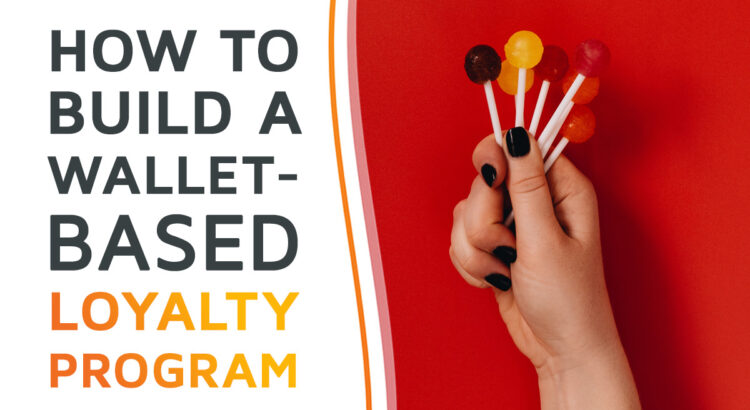One of the key drivers of growth and profitability is customer retention. You may be converting a nice piece of your traffic into sales. But you need a healthy customer retention rate, i.e. your ability to keep a paying customer over a period of time. Else, you will be spending more money over time on acquiring new customers.
The cost of acquiring a new customer is high. According to Harvard Business Review that cost can amount to 5 to 25 times more than it takes to retain a customer. That is why you will see a lot of businesses have implemented a loyalty program to entice people to return and increase retention.
But what would a higher retention rate mean for merchants? According to Bain & Company, a 5% increase in retention rates can raise profits by more than 25%. By having a loyalty program in place, you end up spending less while simultaneously increasing your profits by targeting your existing customers.
With this article, we want to help you build a thriving business as a merchant or marketplace platform owner by granting customers the incentive of loyalty points. We outline how you can integrate a loyalty program into a payment system built with CoreWallet. The article will answer the questions:
- What is a loyalty program?
- What types of loyalty programs exist?
- How to set up a point-based loyalty program for your business – on the technical side?
- Why will you benefit from implementing your loyalty program with CoreWallet?
What is a Loyalty Program?
A loyalty program allows customers to gather benefits through continually using a company’s services or purchasing its products. Typically, such a product centers around a kind of virtual currency or token that’s given out – reward points, coins, vouchers, and so on.
Customers can spend such virtual currency on discount vouchers, gift coupons or exclusive offers. This empties the customer’s loyalty program account and they have to shop the regular way to fill it up again.
The Different Types of Loyalty Programs
There are a variety of ways in which you can set up a loyalty program for your business. You have total freedom to set the conditions on how customers gather loyalty rewards and what they can spend them on. Your choices affect how your loyalty program will operate on a technical level as well.
A points-based program is the most common and simplest to implement, where customers are rewarded with a certain number of points based on how much they’ve spent. For instance, a customer will be given 5 points for every 10€ spent.
Spend programs reward customers with store credit based on the value they’ve spent at a merchant’s online shop. Let’s say a customer would receive 1 point for every 10 Euro spent. Then, when reaching a certain threshold, e.g. 100 points, they would be rewarded with €10 worth of credit for that specific online shop.As an alternative, merchants could also set up a loyalty point calculation based on a percentage of the purchase prize. For instance, they could give out 10% of a purchase in loyalty points.
Tiered programs work like a frequent flier program, with rewards such as free lounge access and other benefits, given to members based on different spending and points levels. A tiered program is often regarded as an upgraded version of a spend program because it enables businesses to easily target specific customer segments with customized campaigns.
Using CoreWallet For Tracking Loyalty Points
CoreWallet is a software product for emoney and virtual account management. It has been designed with high flexibility in mind. That means it can be made to handle any digital currency or stored value. Thus CoreWallet presents a firm foundation for your custom-built payment system – one which can also represent a loyalty program, tracking how many points your customers are earning and spending.
Building a Point-Based Loyalty Program
In CoreWallet, you can represent loyalty points as a virtual currency you set up. But first, you have to think about the nature of your loyalty points, answering questions like:
- How do customers earn loyalty points?
- Where can customers spend loyalty points?
- What value has each loyalty point earned in your system?
Once that’s decided, you have two scenarios to build up the technical foundation of your loyalty program with CoreWallet:
- You can use CoreWallet only as a virtual currency management solution: In this scenario, the software simply stores and processes your customer’s reward currencies, while you handle every other aspect of the purchase process yourself or engage third parties there. This would require building up the loyalty program from the ground, while still benefiting from CoreWallet’s main features.
- You can use CoreWallet as the foundation for your whole purchasing and checkout system: This has the advantage that a loyalty program, where customers gain points upon purchase, is already part of the system. If the customer registers for the loyalty program with a merchant on the platform, every time they buy in the merchant’s shop hereafter, they are provided loyalty points. They can spend those points at the same merchant later on.
That makes loyalty points easy to track. Merchants can also set up contingencies, so only a finite number of loyalty points are issued and in circulation.
Combining Loyalty Points and Fiat Currencies
No matter which option you go for, the processing of loyalty points would look similar: CoreWallet represents customers’ point stashes within electronic wallets. Every customer would have a wallet account that would contain and manage points balances.
When a customer spends their loyalty points to purchase a product or a shopping coupon, this is processed as a transaction. The transaction occurs between the customer’s wallet account and a system wallet, which handles points on your platform side. In fact, as you set up your loyalty system, it’s easy to keep track of loyalty points in circulation: Your system wallet never gives out more loyalty points than it has created and customer wallet accounts can be set to not allow negative balances.
What’s more, CoreWallet’s multi-currency feature enables you to manage any kind of e-money (fiat, virtual or cryptocurrency) besides the reward points. The multi-currency feature is allowing your customers to combine their reward points with their own money to make purchases in your store. That is a nice way to improve your customer experience.
For instance, a customer has 1000 reward points (which would equal a monetary value of 100€ in the above example) and wants to purchase an item that costs 200€. During checkout, your customer is presented with a slider and can choose to use all 1000 points to bring the price down to 100€.
CoreWallet acts as the backend system for all of the above. It accounts for each customer’s loyalty points and also for tracking balances of real money that are coming into your system through your payment provider. Fortunately, the CoreWallet API is flexible enough that integrations with your front-end and third-party software are hassle-free and quick to implement.
Getting Started
How to get your loyalty product off the ground? The best way would be to start taking a tour through all features of CoreWallet during a free demo session. We will show you how CoreWallet can help you implement the exact payment and loyalty program solution you require.

